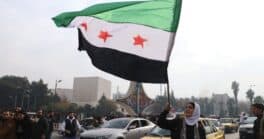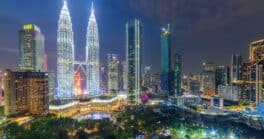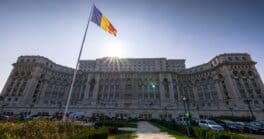There is one unignorable input to Bangladesh as an investment proposition: growth. The country’s growth data points are remarkable, with an average 7% GDP growth over the past decade and not a single year of contraction over the past 30 years.
Those figures have burnished the reputation of Prime Minister Sheikh Hasina, daughter of the nation’s founder and in power since 2009, who has championed the country’s textile industry as a powerful growth engine.
All has not been smooth sailing for the net oil-importing nation. Last year, rising fossil fuel prices increased inflation, shaving 1% off 7% forecast growth and creating a balance of payments crisis that led to intervention by the International Monetary Fund (IMF). But the country’s long-term growth trajectory remains intact.
When the country experienced an unprecedented reversal of its financial accounts last year, leading to a deterioration in the balance of payments and consequent pressure on Bangladesh Central Bank’s foreign exchange reserves and the taka, the bank, under program guidance from the IMF, tightened monetary policy, allowed greater exchange rate flexibility.
“Due to active intervention by the central bank, there has been some convergence of formal and informal exchange rates for the taka,” says Salim Afzal Shawon, head of research at BRAC EPL, a Dhaka stock brokerage. “Whereas we have seen different formal and informal rates with as high as a 14%-plus gap in between, it has narrowed a bit recently, with some sign of steadiness, which should help improve onshore dollar liquidity.”
| Vital Statistics |
| Location: South Asia |
| Neighbors: India, Nepal, Bhutan, China, Myanmar, Pakistan, Afghanistan, Tajikistan, Kyrgystan |
| Capital City: Dhaka |
| Population (2021): 172.9 million |
| Official language: Bengali |
| GDP per capita (Est. 2023): $2,657 |
| GDP size (Est. 2023): $446.3 billion |
| GDP growth (Est. 2023): 6%; forecast 6% 2024 |
| Inflation (Est. 2023): 9.7%; forecast 7.2% 2024 |
| Unemployment rate (Est. 2023): 9.5% |
| Currency: Taka |
| Investment Promotion Agency: Bangladesh Investment Development Authority (BIDA) |
| Investment incentives: All incentives are subject to various registrations and approvals. The industry must be registered with BIDA for corporate income tax (CIT) exemption (holiday and rebate), based on type of business and geographical location; CIT exemption subject to National Board of Revenue approval; import duty exemption on capital machinery and spare parts subject to BIDA registration and approval from the office of the Chief Controller of Export and Import. Accelerated depreciation allowance for plants and machinery. |
| Corruption Perceptions Index (2022): 147 (out of 180 countries) |
| Credit Rating: BB- Outlook negative (Fitch Ratings) |
| Political Risk: Civil protests are common but political stability is intact following the ruling party’s 2024 election victory, albeit amid criticisms of authoritarianism and a slide into one-party rule |
| Security Risk: Ongoing risks of opposition BNP-orchestrated violence and terrorist attacks. |
| PROS |
| Stable political backdrop |
| Young population (28% of which is ages 15-29) |
| Pro-business administration |
| Sustainability-friendly with strong underlying framework to support green transition, at-scale financial support from MDBs and other international development finance organizations |
| CONS |
| Highly vulnerable to climate change |
| Corruption endemic in a red tape-choked business backdrop |
| Ingrained negative perception among international investors |
| Confusing foreign exchange environment |
| Concentration risk to textile sector |
For more information on Bangladesh, click here.
“Due to active intervention by the central bank, there has been some convergence of formal and informal exchange rates for the taka,” says Salim Afzal Shawon, head of research at BRAC EPL, a Dhaka stock brokerage. “Whereas we have seen different formal and informal rates with as high as a 14%-plus gap in between, it has narrowed a bit recently, with some sign of steadiness, which should help improve onshore dollar liquidity.”
Meanwhile local commercial banks have grown their hard currency reserves, boosting system liquidity.
Textile Dependency
Bangladesh’s most urgent economic need, close observers say, is to ameliorate the concentration risk from a too-great reliance on textiles, which account for 85% of the country’s exports and 10% of GDP. Given that the government appears to be well aware of the urgency of diversifying the economy, however, the backdrop for foreign direct investment (FDI) is ripe with opportunity.
“We must see how we can attain sustainable export growth. For that we have to find new markets across the globe. We have to diversify our products, and we have to induct new items in our export baskets,” Sheikh Hasina said last March as she addressed the 11th meeting of the National Committee on Export, eyeing the digital devices, pharmaceuticals, light and medium weight industries, motor vehicles and electronic motor vehicles, and food processing sectors.
“We have formulated a perspective plan which aims at making the country developed by 2041. For that we need to advance gradually and we have to work in this field,” she added.
That said, the country still suffers from long-standing preconceptions that hold back foreign investment, as highlighted in a United Nations Conference on Trade and Development (UNCTAD) report published in 2021: “Despite steady economic growth in the country over the past decade, FDI has been comparatively low in Bangladesh compared to regional peers. Bangladesh suffers from a negative image: The country is seen as being extremely poor, underdeveloped, subject to devastating natural disasters and sociopolitical instability.”
At the same time, UNCTAD noted the positives: the country’s macroeconomic stability, low levels of public debt (31% of GDP in December 2022), a low-cost workforce, a strategic geographic position as a gateway to Asia Pacific, a strong position in the global economy’s value chain, and a pro-business legislative environment. Accordingly, the country attracted $900 million of FDI in calendar 2023, the Bangladesh Investment Development Authority (BIDA) said during a two-day Investment Expo held in conjunction with the Foreign Investors Chambers of Commerce (FICCI) in November.
That figure is impressive given the volatility that forced the country to seek a $4.7 billion IMF bailout early in 2022 to plug a balance of payments hole. The deal also required Bangladesh to enter a 42-month supervisory program aimed at strengthening its financial system and fostering sustainable economic growth.
The prior year, the textile sector recorded its highest-ever FDI—$1.23 billion, according to the central bank—while total FDI rose 20% to $3.48 billion, according to UNCTAD. Those new infusions bucked a declining overall FDI trend that saw global volume decline by 12% to $1.3 trillion due to the Ukraine war, rising food and energy prices, and debt service cost pressures.
“Bangladesh remains overreliant on garments, with around 85% of the country’s exports deriving from that sector,” says Florian Schmidt, founder and CEO of Singapore-based capital markets advisory Frontier Strategies. “The need therefore is to diversify into higher value-added industries—for example, pharmaceuticals or electronics.”
Encouraging FDI
The government appears to be sharpening its approach. At the Investment Expo, Mohsina Yasmin, BIDA’s acting executive chairman, highlighted the launch of a one-stop service to encourage FDI and address business-related challenges; 90 different types of support are offered, with the aim of protecting foreign investors from harassment and excessive costs.
“We hold a broadly positive outlook for foreign direct investment inflows into Bangladesh,” says Tim Kerckhoff, senior analyst at London-based research firm BMI, a unit of Fitch Solutions, “which we think will be supported by policy continuity following the January 2024 general elections and increased demand for Bangladeshi garment exports.”
Kerckhoff points to the reelection of Sheikh Hasina, which augurs a continuation of the policies that have succeeded in attracting significant FDI flows. Weak macroeconomic conditions and weakened consumers purchasing power will shift consumer spending from mid-priced to low-priced clothing, he predicts, benefiting Bangladesh’s low-wage producers. “We expect that retailers’ efforts to diversify their supply chains beyond Mainland China will support FDI inflows into Bangladesh,” he adds.
Fitch Ratings downgraded Bangladesh’s BB- ratings outlook to negative in September, citing a deterioration in external buffers and a policy response insufficient to stem falling foreign exchange reserves. But that call might have been excessively gloomy, Shawon argues: “Our reserves cover around four months of imports, which should be sufficient to get through this cash flow strain, and our capital account is not open, which should guard against excessive downside taka volatility. Meanwhile, the upcoming loans from the IMF and other multilateral financial institutions would certainly help bridge the gaps.”
A wild card is Bangladesh’s high-risk exposure to climate change; the 2021 Global Climate Risk Index Report ranked it seventh among countries most affected by climate change between 2000 and 2019. That vulnerability may be a developmental capital blessing in disguise.
In December, the government established its Bangladesh Climate and Development Platform (BCDP), a collaborative initiative and the first of its kind in Asia, spearheaded by the Asian Development Bank and World Bank, aimed at mitigating and adapting to the effects of climate change and involving the participation of multilateral development banks and other bilateral partners—12 in total—including the Green Climate Fund.
The BCDP will “generate a robust pipeline of climate projects, integrated with a financing strategy” and the initiative aims to attract private capital via risk mitigation and direct funding, according to an IMF prepared statement. The initiative includes a Project Preparation Facility, which aims to coordinate development partners and support scalability in order to attract private investment.




